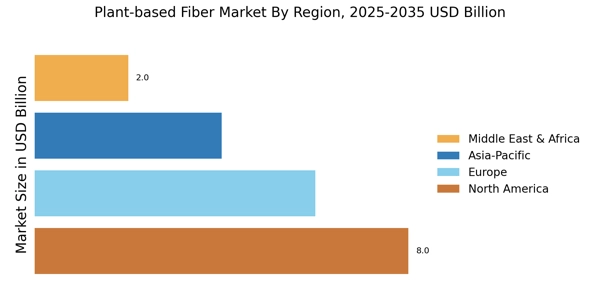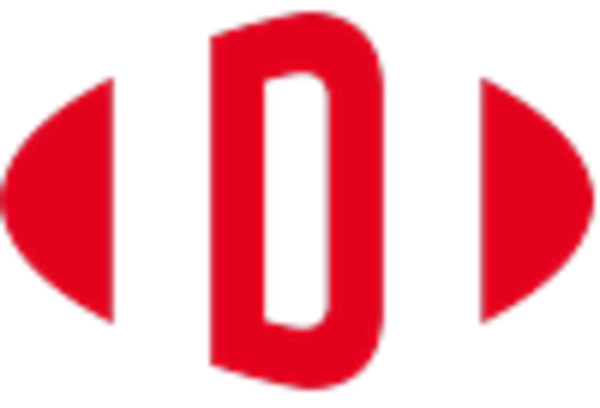Regulatory Support
Government policies and regulations promoting the use of sustainable materials are emerging as a significant driver for the Plant-based Fiber Market. Various countries are implementing regulations that encourage the adoption of eco-friendly products, including plant-based fibers. This regulatory support not only fosters innovation but also provides financial incentives for companies to invest in sustainable practices. For example, subsidies for agricultural practices that promote the cultivation of fiber crops can enhance supply chain stability. As these policies gain momentum, they are expected to create a favorable environment for the growth of the Plant-based Fiber Market, potentially leading to increased investment and market expansion.
Health Consciousness
The rising awareness of health and wellness among consumers is significantly influencing the Plant-based Fiber Market. With a growing body of research linking dietary fiber to various health benefits, including improved digestion and reduced risk of chronic diseases, consumers are increasingly seeking plant-based fiber products. In 2023, the demand for high-fiber foods surged, with plant-based fibers being recognized for their nutritional advantages. This trend is further supported by dietary guidelines that recommend higher fiber intake, which has led to an expansion of product offerings in the market. As health consciousness continues to rise, the Plant-based Fiber Market is poised to capitalize on this shift, potentially leading to increased sales and market penetration.
Sustainability Initiatives
The increasing emphasis on sustainability appears to be a pivotal driver for the Plant-based Fiber Market. Consumers are becoming more environmentally conscious, leading to a surge in demand for sustainable products. This trend is reflected in the growing preference for plant-based fibers over synthetic alternatives, which are often derived from petroleum. In 2023, the market for plant-based fibers was valued at approximately 5 billion USD, with projections indicating a compound annual growth rate of around 8% through 2030. Companies are responding by investing in sustainable sourcing and production methods, which not only appeal to eco-conscious consumers but also align with regulatory frameworks aimed at reducing carbon footprints. As sustainability initiatives gain traction, the Plant-based Fiber Market is likely to experience robust growth.
Innovative Product Development
Technological advancements in product development are driving innovation within the Plant-based Fiber Market. Companies are leveraging new processing techniques to enhance the quality and functionality of plant-based fibers, making them more appealing to manufacturers and consumers alike. For instance, advancements in extraction methods have improved the yield and purity of fibers from sources such as flax, hemp, and bamboo. This innovation is crucial as it allows for the creation of a diverse range of products, from textiles to food ingredients. The market is witnessing a notable increase in the introduction of novel plant-based fiber products, which could potentially expand market share and attract new consumer segments. As these innovations continue to emerge, the Plant-based Fiber Market is likely to evolve rapidly.
Consumer Demand for Eco-Friendly Products
The growing consumer demand for eco-friendly products is a crucial driver for the Plant-based Fiber Market. As awareness of environmental issues rises, consumers are actively seeking alternatives to traditional materials that contribute to pollution and waste. This shift in consumer behavior is evident in the increasing sales of plant-based fiber products, which are perceived as more sustainable. In 2023, the market for eco-friendly textiles, including those made from plant-based fibers, experienced a notable increase, with projections suggesting continued growth. Companies are responding by enhancing their product lines to include more sustainable options, thereby aligning with consumer preferences. This trend is likely to bolster the Plant-based Fiber Market, as businesses adapt to meet the evolving demands of environmentally conscious consumers.


















Leave a Comment